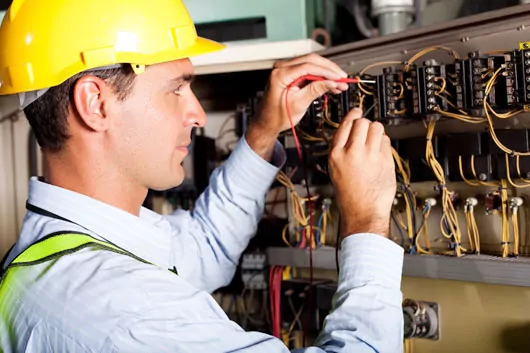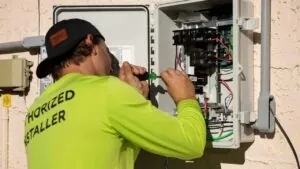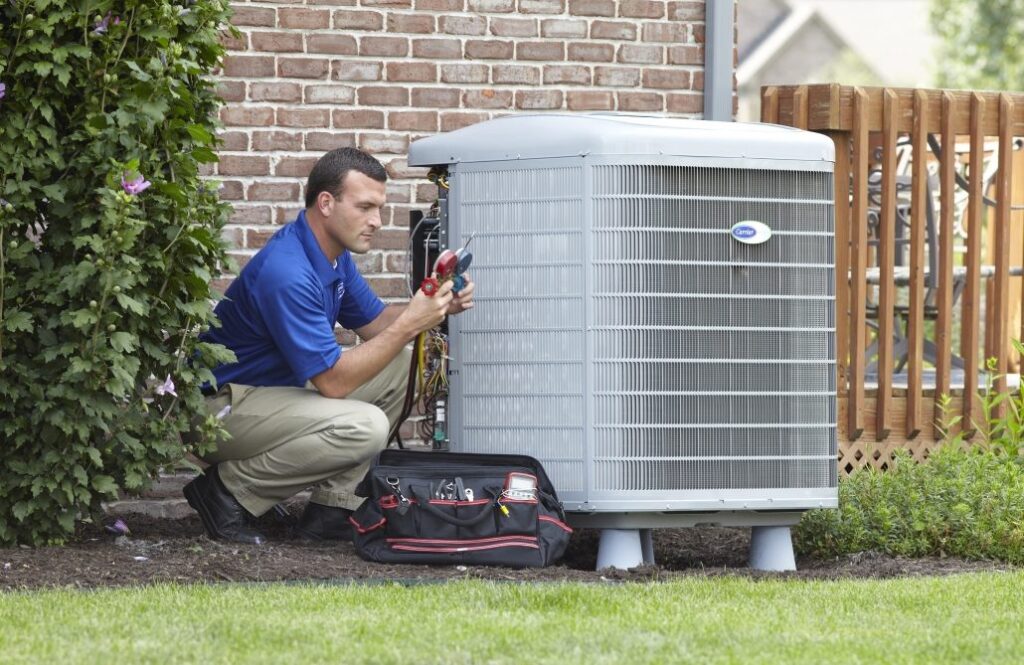Hourly vs Flat Rate Electrical Work: Which Is Better for Electrical Work?

When hiring an electrician, one of the most common questions homeowners face is: Should I go with hourly vs flat rate electrical work pricing? Both options have their pros and cons, and the right choice often depends on the nature of the job, your budget, and the company you hire. Whether you’re planning an upgrade, need a quick fix, or are looking for ongoing electrical support, understanding how pricing works can help you make a more informed—and cost-effective—decision.
In this guide, we break down the differences between hourly and flat rate pricing for electrical work, when each method is typically used, and how to protect yourself from unexpected costs.
What Is Hourly vs Flat Rate Electrical Work?
With hourly pricing, an electrician charges a fixed rate for each hour they spend on the job. This is a common structure for service calls, troubleshooting, and projects where the full scope isn’t known in advance.
Typical Hourly Rates
- Licensed electrician: $75–$150/hour
- Master electrician: $100–$200/hour
- Apprentice/helper: $40–$75/hour (usually billed lower or not separately)
Rates can vary depending on region, job complexity, and emergency/same-day service needs.
Pros
- Fair for small or simple jobs
- You pay for exactly how long the job takes
- More flexibility if scope changes during the job
Cons
- Cost can rise quickly if problems are discovered mid-project
- No firm total cost estimate until the work is finished
- Encourages slower pace if contractor isn’t efficient
Hourly pricing is often ideal for diagnostic and repair services, especially when it’s unclear what the root cause of an issue is.
What Is Flat Rate Pricing for Electrical Work?
Flat rate pricing means the contractor quotes a fixed price for the entire job before any work begins. This model is becoming more popular, especially among larger service providers.
How It Works
- Electrician assesses the job (on-site or virtually)
- You receive a total project price, regardless of time spent
- Materials and labor are usually included in the quoted cost
Pros
- You know the full cost upfront
- Easier to budget with no surprise fees
- Encourages efficiency and fast job completion
Cons
- Pricing may include markup to account for unexpected issues
- Less flexible if you change the scope mid-project
- Some small jobs may seem overpriced if priced like a larger task
Flat rate pricing works well for installation projects (e.g., ceiling fans, EV chargers, panel upgrades) where the scope is clearly defined.
When to Choose Hourly Over Flat Rate
Hourly pricing may be a better fit if:
- You’re dealing with an urgent repair and unknown cause
- The electrician is troubleshooting multiple issues in one visit
- You trust the contractor to work efficiently and fairly
For example, if your outlets stop working and you don’t know why, hiring someone hourly might cost less than paying a flat fee for what could be a simple fix.
When Flat Rate Is the Smarter Choice
Flat rate pricing is usually the better route when:
- You want pricing certainty and to avoid surprise fees
- You’re having something installed with clear scope
- You’re comparing bids from different contractors
If you’re doing a major upgrade like a panel replacement or generator installation, a flat rate gives peace of mind and better budget control.
How Electrical Contractors Choose Pricing Models
Some contractors offer both models depending on the service, while others exclusively use one approach. At Michael Bonsby, for instance, flat rate pricing is common for installations, while electrical repair jobs may be billed hourly if diagnostics are required first.
Before hiring anyone, always ask:
- Do you charge by the hour or offer flat rate?
- What’s included in the price?
- What happens if the job takes longer than expected?
Clear communication upfront avoids frustration later.

Hybrid Pricing: A Growing Trend
Some electricians offer hybrid pricing: they charge a flat fee for the initial diagnostic visit, then offer a flat rate for the work once the problem is found. This model is gaining traction for being transparent and fair.
Example:
- $89 diagnostic fee (credited toward final work)
- $320 flat rate to replace faulty circuit
This gives customers a clearer path to decision-making while still addressing unknowns early on.
Which Option Saves More Money?
There’s no one-size-fits-all answer. But here are some general insights:
|
Type of Job |
Likely Better Option |
|
Simple outlet repair |
Hourly |
|
Installing ceiling fan |
Flat rate |
|
Troubleshooting outages |
Hourly |
|
Upgrading breaker panel |
Flat rate |
|
EV charger install |
Flat rate |
|
Diagnosing faulty wiring |
Hourly |
The more complex or time-consuming the job, the more likely flat rate will save money. For smaller or uncertain issues, hourly is often more flexible.
Hourly vs Flat Rate Electrical Work: Hidden Fees to Watch For
Regardless of pricing model, be sure to ask about:
- Service call fees or trip charges
- Permitting and inspection costs
- Disposal fees for old materials
- Emergency or weekend upcharges
These extras can quickly turn a low quote into a high final bill.
FAQs
Is flat rate pricing always more expensive?
Not always. It may seem higher up front, but it often saves money by avoiding extended labor hours or add-ons. It also protects you from inefficient contractors.
What if the flat rate contractor finishes early?
You still pay the agreed price. The benefit is that you’re paying for the outcome, not the time. In many cases, this encourages faster work.
Can I ask for a flat rate even if they usually charge hourly?
Yes. Many electricians are willing to offer a flat rate if the job is straightforward and clearly scoped.
How do I avoid being overcharged hourly?
- Ask for a written estimate of expected hours
- Clarify what the hourly rate includes
- Monitor progress and ask questions if needed
Final Thoughts
Both hourly and flat rate pricing have their place in electrical work. The best approach depends on the job, the contractor, and your comfort level with variable costs.
To protect yourself:
- Get quotes in writing
- Ask about pricing structure before work begins
- Choose a licensed, well-reviewed professional
When in doubt, reach out to a provider that offers transparent pricing, excellent communication, and flexible options—like Michael Bonsby Electrical Services. We’re here to help you make the right call, whether it’s a one-hour job or a full system upgrade.
Contact Us Today Full Width




